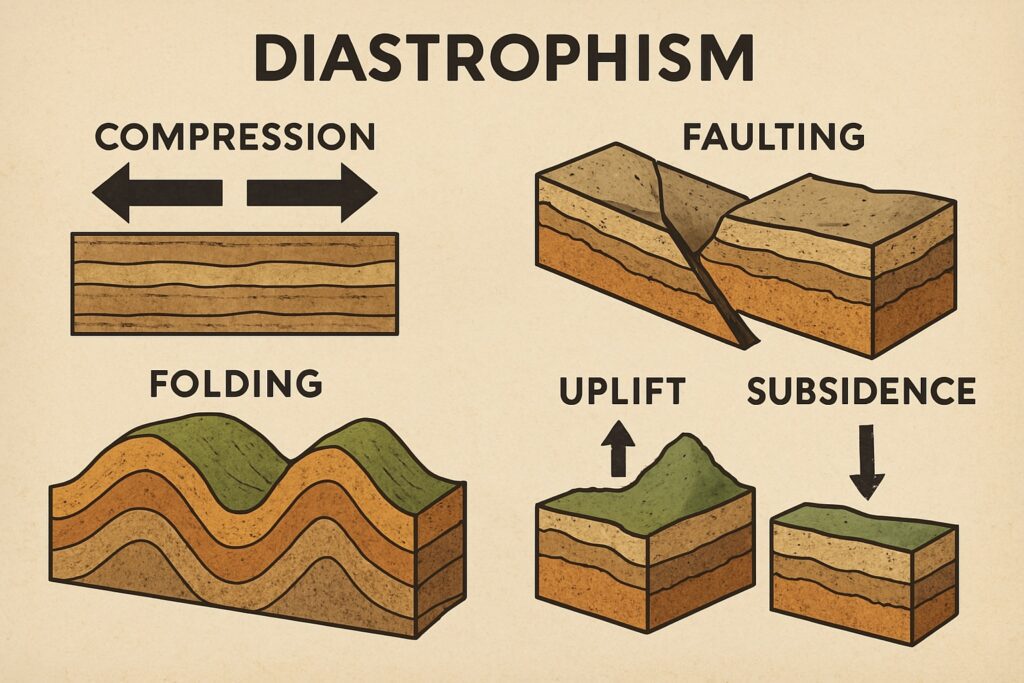Diastrophism refers to the collective processes that deform the Earth’s crust and create changes in its shape and size over geologic time. These processes involve movements of large-scale crustal blocks due to tectonic forces acting within the Earth’s lithosphere. Diastrophism plays a fundamental role in shaping the Earth’s surface and is responsible for the formation of various landforms, such as mountains, valleys, plateaus, and rifts.

Table of Contents
Features and Processes of Diastrophism
- Tectonic Forces: Diastrophism is primarily driven by tectonic forces, which result from the movement of tectonic plates in the Earth’s lithosphere. The lithosphere is divided into several large plates that float on the semi-fluid asthenosphere beneath them. The interactions between these plates lead to various tectonic activities, including convergent, divergent, and transform plate boundaries.
- Folding: One of the significant processes in diastrophism is folding, where rocks and sediments are subjected to lateral compression or tensional forces, causing them to bend and buckle. Folded structures like anticlines (upward-arching folds) and synclines (downward-arching folds) are common features formed by this process.
- Faulting: Faulting is another essential component of diastrophism, involving the movement of rock masses along fractures or faults. Faults can be either normal faults (resulting from tensional forces), reverse faults (caused by compressional forces), or strike-slip faults (due to horizontal shearing forces).
- Uplift and Subsidence: The tectonic forces responsible for diastrophism can lead to vertical movements of the Earth’s crust. Uplift occurs when portions of the crust are elevated, creating features like mountain ranges and plateaus. Subsidence, on the other hand, refers to the sinking of land, leading to the formation of basins and valleys.
- Volcanism: Diastrophism is often associated with volcanic activity, especially at convergent plate boundaries. The subduction of one tectonic plate beneath another can trigger volcanic eruptions, leading to the formation of volcanic mountains and island arcs.
- Isostasy: The concept of isostasy is closely related to diastrophism. Isostasy refers to the equilibrium that exists between the Earth’s lithosphere and the underlying asthenosphere. When significant crustal movements occur, the lithosphere tends to readjust its position in response to the redistribution of mass, which can result in uplift or subsidence.
Impact and Significance
Diastrophism has profound implications for the Earth’s geology and landscapes. The processes of folding, faulting, and uplifting have shaped the Earth’s surface, creating diverse landforms and geological structures. Mountain ranges, deep ocean trenches, rift valleys, and plateaus are all products of diastrophic movements.
Furthermore, diastrophism plays a crucial role in the formation and evolution of various natural resources. The uplifting and erosion of mountain ranges can expose valuable mineral deposits, while subsidence in certain regions may lead to the accumulation of sedimentary layers that eventually become oil and gas reservoirs.
Read: Geography Notes